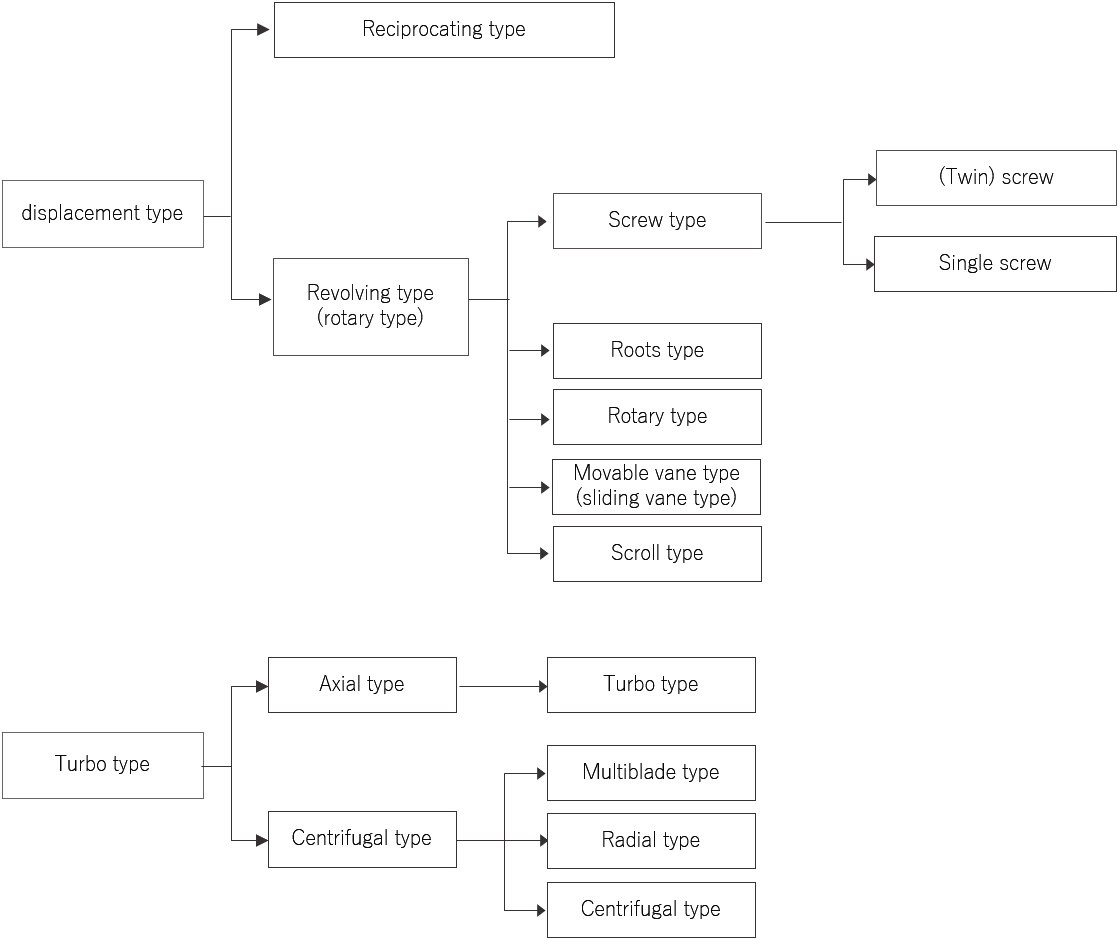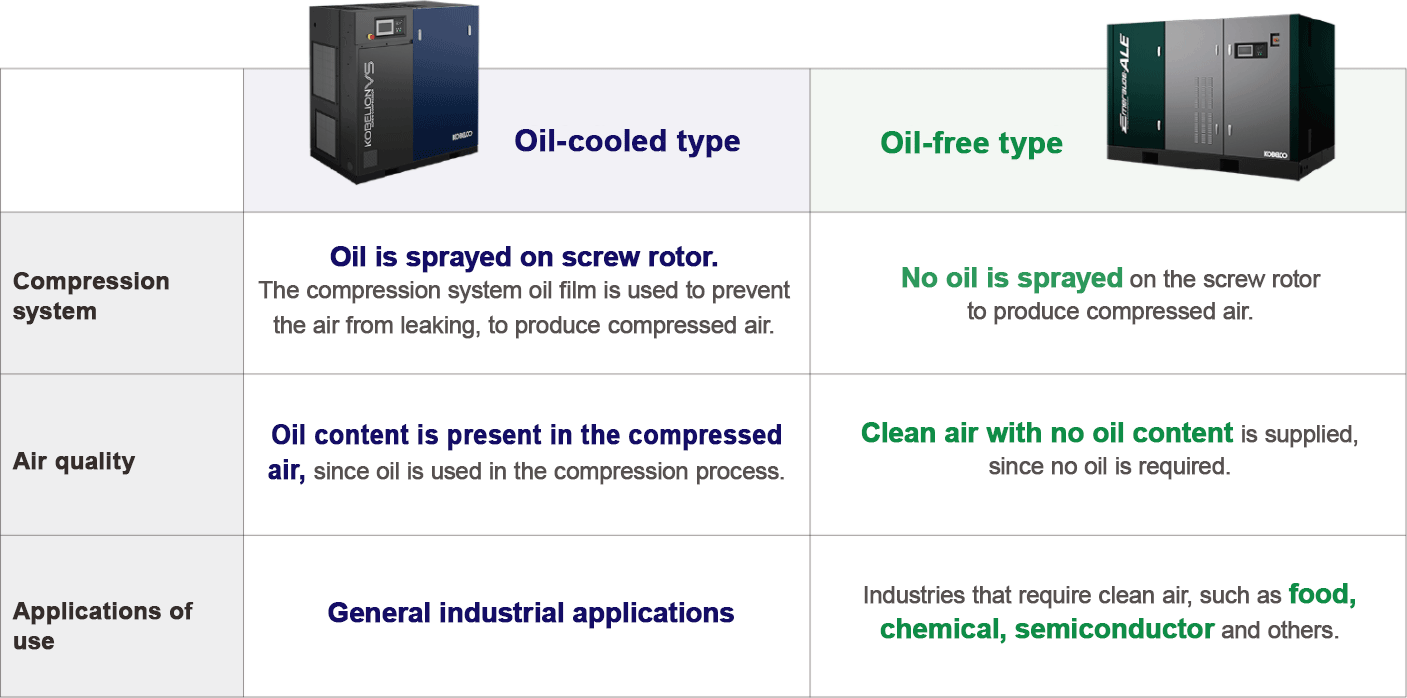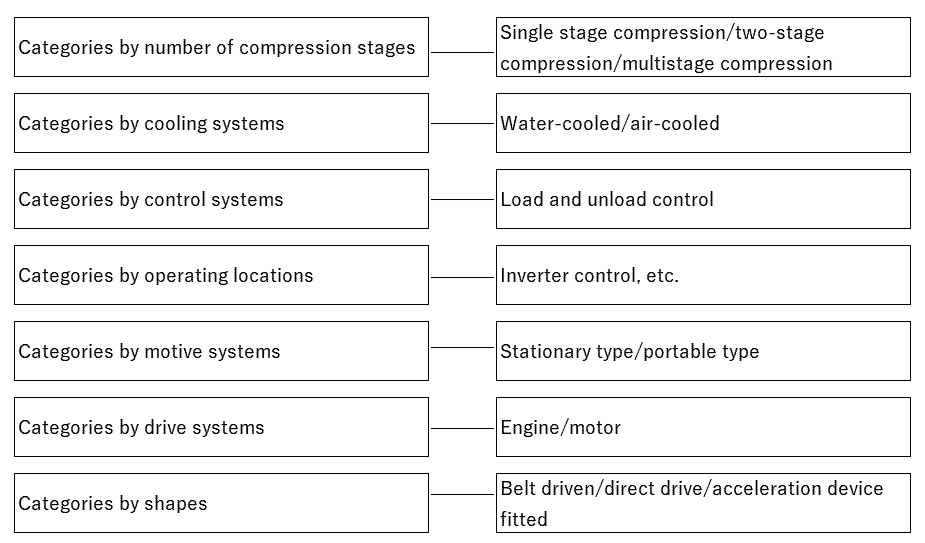The term compressor is an expression that bundles diverse types of equipment. Let us go through each type and category of compressors.
First of all, compressors can be broadly divided into two major categories of compression systems, namely the positive displacement type and the dynamic or turbo type. The positive displacement type is a compression system that traps air in a fixed space, then applies external force to compress the volume to acquire pressure. The turbo type is a compression system that accelerates air flow and converts the flow rate into pressure. The positive displacement type can be further categorized into the reciprocating type and the rotary type. The reciprocating type is suitable for acquiring high pressure air, while the turbo type is suitable for acquiring a large amount of air with low pressure. The rotary system lies somewhere in between the two, and the screw type in particular is the most popular type for general industrial applications.
Categories by compression systems

Types of representative compressors
| Type | Shape | Compression principles | Characteristics |
| Reciprocating |  |
Air is compressed by varying volume through reciprocating motion of a piston. | Sound and vibration of this type tend to be greater, due to low speed rotation. Generally available at low cost. |
| Scroll |  |
Two spiraling rotors are combined to vary the volume of the space partitioned by these rotors to generate compression. | This type is superior in operating with low noise. It is not suitable for continuous operations over long time, since in general these structurally require tip seals. |
| Rotary screw |  |
Air is compressed by varying volume created in grooves of screws through rotation of a rotor with paired male and female screws. | This is the structure of oil air compressors that are most popular for compressed air applications at manufacturing plants. This type offers lowest noise and vibration, with highest efficiency for the medium-size class. |
| Turbo |  |
The acceleration energy is added to air and pressure is raised by rotating the impeller (vane wheel) at high speeds. | This type performs poorly in terms of displacement for tracking load variations (capacity adjustment) and it is suitable for large capacity and baseload machines. |
Next, in terms of "quality of discharged air," air compressors can be broadly categorized into oil injected types and oil-free type.
Oil fed type uses oil for cooling and the like that occurs in the compression process and as a result, a minute amount of oil is mixed in the air that is discharged. This type is widely used for general industrial applications, where having a minute amount of oil mixed in the discharged air presents no problem. In general, the reciprocating type is used for compact compressors and the screw type is popular for medium to large compressors. Oil-free type compressors, on the other hand, are used for applications in which clean air with absence of oil mixing in the discharged air is essential. These are used in food, beverage, medical, electronics, semiconductor, automobile, steel, chemical and other manufacturing industries and applications. Compact compressors consist primarily of reciprocating and scroll types, while medium to large compressors are ordinarily turbo type (for base load) and screw type (for capacity adjustments).
Comparison of oil-injected type and oil-free type (in case of screw type compressors)

Other than the above, compressors can be categorized in the following manner.
Other categories

There are truly a diverse range of compressor types and it is essential that a type that is suitable for the application is selected. It is recommended that a compressor professional be consulted first to make a decision on selecting a compressor.



